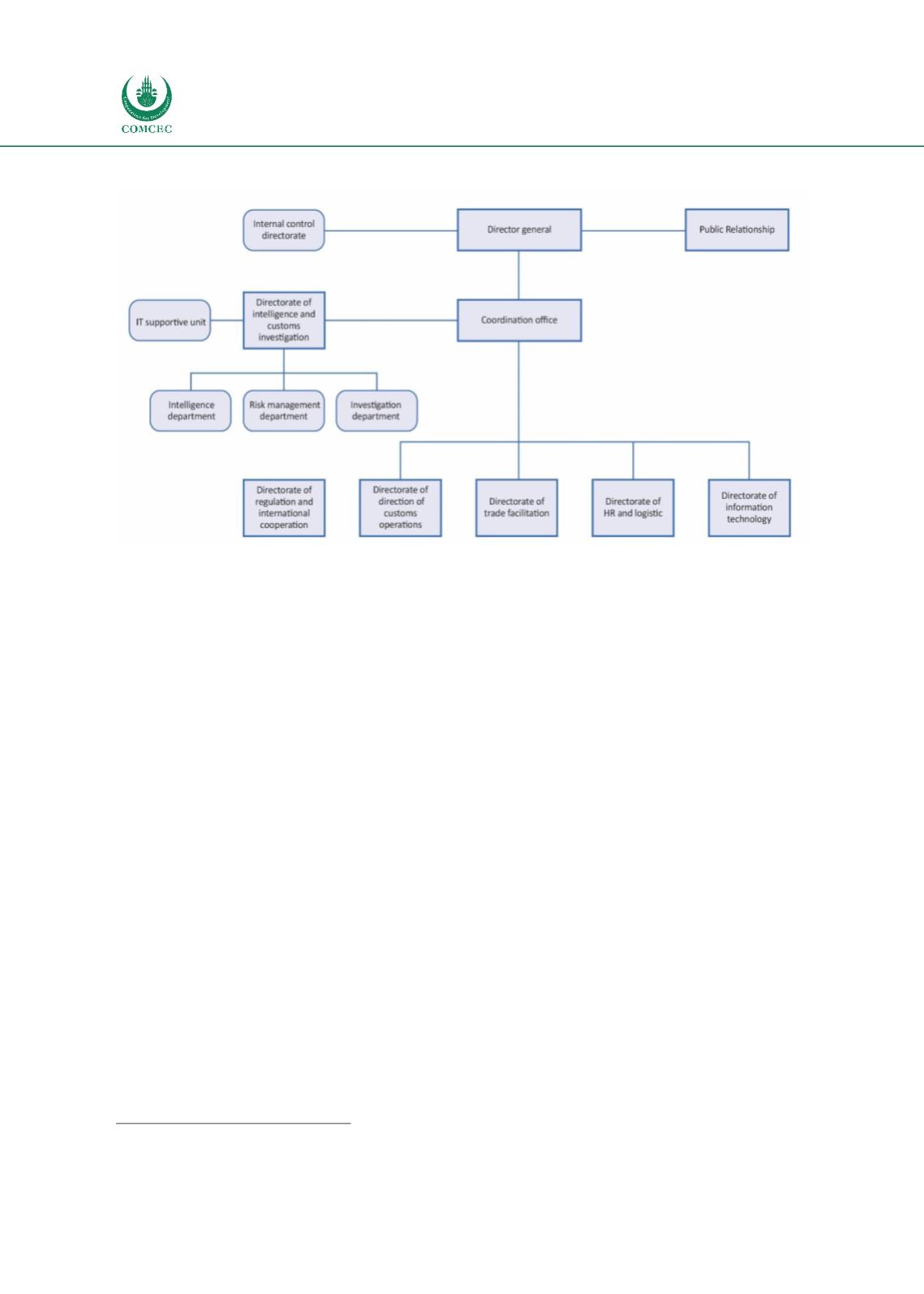

Facilitating Trade:
Improving Customs Risk Management Systems
In the OIC Member States
118
Figure 41: Organizational Structure of Senegalese Customs Administration
Source: Senegal Customs Service
5.2.3
Legal aspects of CRMS in Senegalese Customs
The Senegalese Customs Code has been in effect since 2014 (Code des Douanes du Senegal Loi
2014-10
74
). The CSS has adopted the statutory instruments, the implementing regulation, and
the CRM policy.
There is a no clear distinction between objectives stipulated in the law enforcement strategy
and a risk management strategy. This is why the CRM can be understood as being used for both
control and facilitation purposes. Indeed, it aims among other things, to encourage traders to
apply the law voluntarily and fight effectively against fraud. The three-year strategic
plan emphasizes that the customs controls must use risk management, but it does not have a
regulatory character.
Recently, a CRM framework instruction for customs controls was developed, and it is of
regulatory character, but this instruction should be revised for the CRM to be better organized.
The CRM framework contains mostly memos from the director general of the SCC.
5.2.3.1
Authorized Economic Operator
The CSS has implemented a so-called Privileged Partner Program (PPP) in 2011, which is a trade
facilitation program that needs to be transformed into a real AEO program. The PPP programme
is based on the Décision (Decree) n°0381 DGD/DFPE/BREP of 17 June 2011 setting out the
Programme de Partenaires privilégiés (PPP). In total, there are 11 PPP holders. At present,
traders with PPP are directed to a blue channel with just 5% randomized control.
The PPP benefits are classified in 4 categories:
A category: Immediate release of goods upon registration of the accounting documents
and fast-track removal procedure; Declarations acknowledged as “In Compliance” for
74
http://www.finances.gouv.sn/index.php/publications/code-des-douanes-du-senegal















